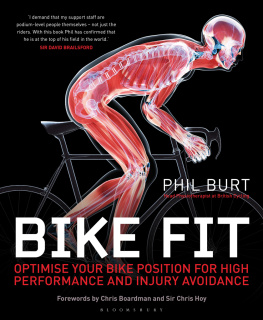

Published by TSO (The Stationery Office) and available from:
Online
www.tsoshop.co.uk
Mail, Telephone, Fax & E-mail
TSO
PO Box 29, Norwich, NR3 iGN
Telephone orders/General enquiries: 0870 600 5522
Fax orders: 0870 600 5533
E-mail:
Textphone 0870 240 3701
TSO@Blackwell and other Accredited Agents
An earlier edition of this book was published by Unwin Paperbacks in 1988
First TSO Edition published 1997
Second TSO Edition published 2007
Third TSO Edition published 2014
ISBN 978 0 11 553307 5
All rights reserved. No part of this publication may be reproduced, stored in a retrieval system, or transmitted in any form or by any means, electronic, mechanical, photocopying, recording or otherwise without the permission of the publisher.
Applications for reproduction should be made in writing to TSO, St Crispins, Duke Street,
Norwich NR3 1PD
Text and illustrations John Franklin 2014
Photographs TSO 2014, except:
Page 244 Roland Werk GmbH 2014
Page 248 Keith Cadwallander 2014
Page 261 Anthony Bearon 2014
Page 268 CTC/Chris Juden 2014
Design and layout by TSO Graphic Design TSO 2014
John Franklin has asserted his right under the Copyright, Designs and Patents Act 1988 to be identified as author of this work.
The information contained in this publication is believed to be correct at the time of manufacture. Whilst care has been taken to ensure that the information is accurate, the publisher can accept no responsibility for any errors or omissions or for changes to the details given.
Printed in Malta for The Stationery Office
J002861373 c50 06/14
About the author
John Franklin has been closely involved in cycle planning and safety activities for more than 35 years. In his capacity as a consultant and a registered expert witness to the courts on cycling skills and safety, he is often called upon to advise on a wide range of matters concerning cycling.
As a member of a government/CTC reference group on cycle training, he was involved with the establishment of the National Cycle Training Standard, now promoted as Bikeability. The syllabus for the national standard is based on Cyclecraft , which is required reading for instructors accredited to teach to the standard, and is recommended reading for trainees. John is himself an accredited instructor.
Encouraging more people to enjoy the pleasures of cycling is a passion of the author, who has been involved in many initiatives to help bring this about. John remains actively involved in cycling activities from international to local level.
A cyclist of wide experience who uses his bike both as his primary means of transport and for leisure, John has cycled extensively under all kinds of conditions throughout the UK and in more than 25 other countries.
CTC, the Cyclists Touring Club, is the national cycling charity.
Acknowledgements
I am grateful to everyone who has contributed to this revised edition of Cyclecraft , especially those who have provided feedback from the implementation of modern cycle training in Britain. The National Cycle Training Standard is now a mature product and a UK success story, enabling thousands of children and adults to realise safe, enjoyable cycling each year. Cyclecraft continues to support the development of the national standard.
Special thanks are due to John Mallows, who took most of the photographs in this edition, and to LifeCycle UK, for their enthusiastic cooperation in providing accredited cycle trainers to demonstrate the various manoeuvres. Individual thanks are due to Jacks Jarrett, Frances and Elinor McMillan, Veronica Pollard, Trudi Righton, Mark Spure, Polly Stubley and Jacqui Wilcox, whose professional approach and knowledge of skilled cycling made it all the easier to obtain good images.
Other photographs are courtesy of Anthony Bearon (with Naomi and Ben), Keith Cadwallander, CTC/Chris Juden and Roland Werk GmbH. The kind assistance of SJS Cycles, Graham and Helen Ricketts, and Mark Wilcox is also acknowledged.
With regard to the text, I remain grateful to Chris Juden, CTCs Technical Officer, for giving me the benefit of his extensive knowledge about the hardware and science of cycling, particularly with regard to developments in cycle and component design.
My thanks to all concerned.
John Franklin
Contents
Introduction
Cycling for health, enjoyment and you
Cycling is a wonderful activity. It is the most efficient means of travelling known to man, a pleasurable pastime that can be enjoyed by young and old alike, one of the best ways to maximise health and well-being, an elixir of life, and a completely sustainable mode of transport. Almost everyone is able to cycle and, for a child, learning to ride a bike is an important landmark in their development as an independent person.
Many people would like to cycle or to cycle more. However, the traditional myths that cycling is hard work and slow have been augmented in recent years by the perception that cycling is also inevitably unsafe. Many people fear riding in todays traffic, on roads too often designed primarily for motor vehicles, and feel that there is little cyclists can do to protect themselves from the hazards present.
Experienced cyclists know otherwise. They know that by controlling their machine correctly and using appropriate riding techniques, cycling can not only be safe but also fun. Learning to ride efficiently means that cycling is seldom strenuous and is frequently a very speedy means of getting about, particularly in towns. One of the key challenges for someone learning to cycle is to overcome the prejudices and misconceptions which have become part of cycling folklore.
In fact, far from cycling being an unsafe activity, research shows that cycling regularly is the single most effective action you can take to increase your life span. Cyclists, on average, live longer than non-cyclists and experience much less ill health. They are twelve times less likely to die of heart disease. Whatever the negative effects of sharing the roads with heavy traffic, it is evident that, on balance, cycling leads to longer and healthier lives. Moreover, when you choose to cycle rather than to travel by car, everyone benefits from reductions in pollution and congestion.
If you learn to cycle skilfully you will enhance your ability to use the roads in safety. Although you will encounter much bad driving, most of it can be anticipated and its effects avoided. Surveys suggest that competent cyclists are much less likely to be involved in a conflict, and vulnerability generally decreases as a riders skill and experience increase.
How Cyclecraft can help you to cycle well
Cyclecraft teaches cycling technique in a similar way to teaching someone to drive a car how to acquire the skills and confidence to ride with traffic, not fear it. The general aims are to maximise your safety and riding efficiency, while minimising inconvenience to others and wear to your machine.
Advice is given on how to deal with all common road situations, recognising how impractical it often is to avoid the more difficult ones. It follows the supposition, well endorsed by skilled riders, that the only way to be safe is to learn to control a cycle as a vehicle and to read and respond to what is going on around you. For this reason the cyclist is frequently referred to as a vehicle driver, for that is what you must be. Cyclecraft also outlines the problems experienced by other road users; by taking these into account, you can react in the ways most likely to benefit your journey.
Next page















